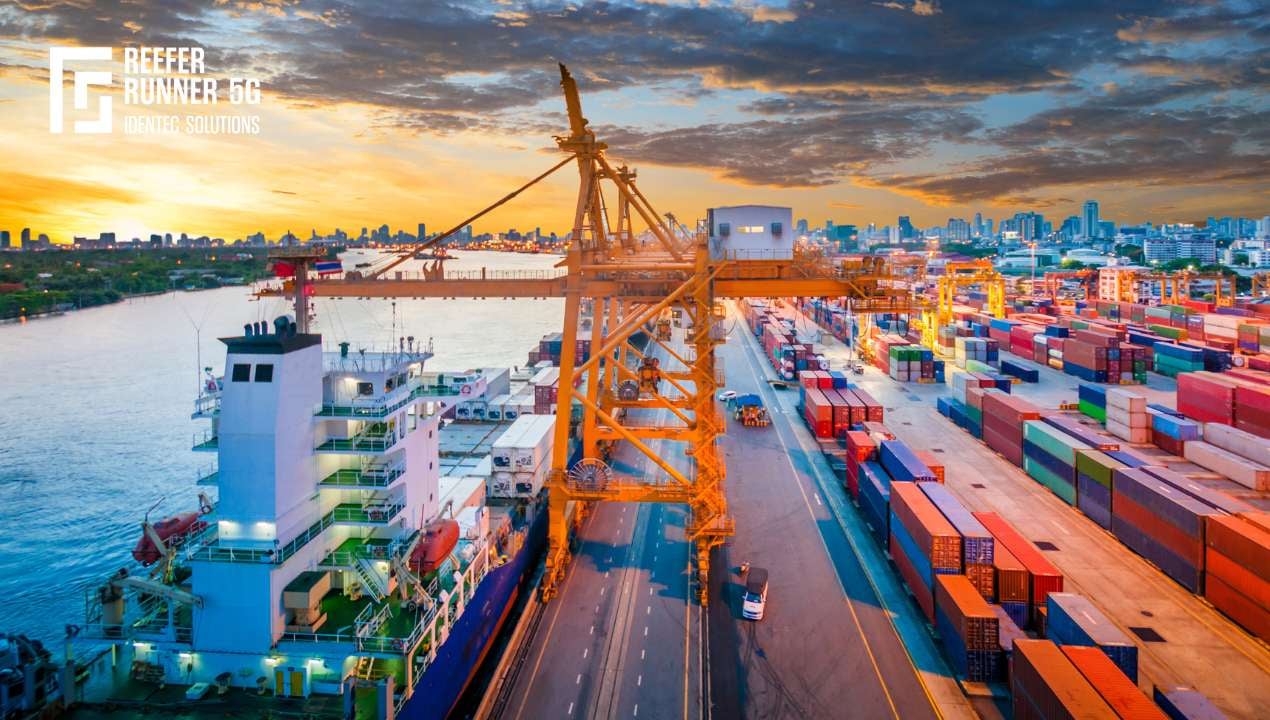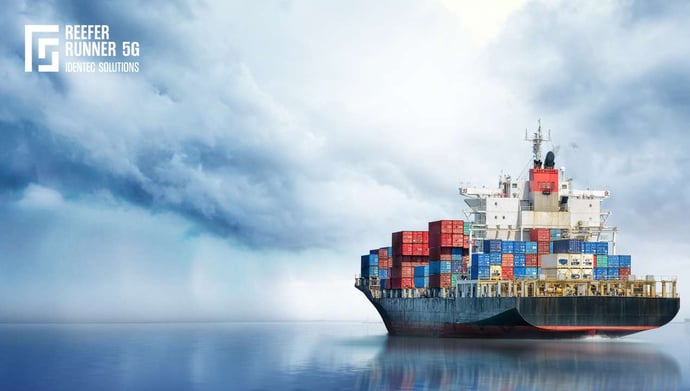Cold Chain Requirements: The Silent Symphony Orchestrating Global Health
| Written by Mark Buzinkay

No video selected
Select a video type in the sidebar.
The Cold Chain: A Vital Artery for the Pharmaceutical Industry in 2023
When dealing with the intricate world of pharmaceuticals, it's crucial to maintain the integrity of medical products from manufacture to delivery, a process often referred to as the 'Cold Chain'. Cold Chain is a term frequently used in the pharmaceutical sector to describe a system used to store and transport products in a temperature-controlled environment. But in 2023, with the enhanced scope of biopharmaceuticals and personalized medicines, the Cold Chain has evolved into a complex, technology-driven network ensuring the safety and effectiveness of a growing range of drugs and vaccines.
In essence, the Cold Chain ensures that temperature-sensitive pharmaceutical products are kept within specific temperature ranges during transportation and storage. The range can vary, but it typically falls between 2 and 8 degrees Celsius for refrigerated products and minus 20 to minus 80 degrees for frozen products. This temperature control is vital in maintaining the efficacy of these products, as any deviation could result in compromised product quality, leading to potential health risks for patients and financial loss for manufacturers.
To manage this, an array of technologies and strategies is employed. This includes refrigerated transport vehicles, insulated packaging, digital temperature monitors, and, increasingly, real-time GPS tracking systems. Blockchain technology has also been implemented to offer transparent, tamper-proof records of each step in the chain, enhancing trust and accountability.
In 2023, the Cold Chain has never been more critical. The global COVID-19 pandemic brought a newfound appreciation for the logistical prowess of the Cold Chain. It played an instrumental role in the successful rollout of COVID-19 vaccines, many of which required ultra-cold storage conditions. Given the global demand, the vaccines had to be transported to remote corners of the world, making the Cold Chain an indispensable player in global health.
Beyond the pandemic, the biopharmaceutical industry's growth has accelerated the evolution of the Cold Chain. The rise of cell and gene therapies, which often require individualized manufacturing and ultra-cold storage, has made it even more crucial. Moreover, regulatory scrutiny has increased, with bodies such as the U.S. Food and Drug Administration (FDA) and the European Medicines Agency (EMA) demanding rigorous compliance with stringent temperature controls.
The Cold Chain's importance extends to the economic sphere as well. Its market size is projected to reach $24.6 billion by 2025, according to MarketsandMarkets, fuelled by the growth in biologics, the increased demand for outsourced logistics, and the expansion of the vaccine market.
The Cold Chain, therefore, represents an intricate intersection of healthcare, technology, and logistics. Its mission, albeit simple on paper, involves a delicate and critical balance: to ensure the safe and effective delivery of life-saving medical products to patients worldwide. In an age where personalized medicine and global health challenges have come to the forefront, it's clear that the Cold Chain's role in the pharmaceutical industry will only grow in importance.
Chilling Requirements: The Pharmaceutical Items Relying on the Cold Chain System
If the pharmaceutical industry were an orchestra, the Cold Chain would be its conductor, coordinating an array of elements to produce an effective result. The Cold Chain, a temperature-controlled supply chain, is vital to several pharmaceutical items requiring specific temperature ranges to maintain efficacy. Let's shed light on the key players of this orchestra – the pharmaceutical items demanding this careful refrigeration.
First on the list, and perhaps most known to the general public following the COVID-19 pandemic, are vaccines. Vaccines are biologically active substances and are often sensitive to heat and freezing. This includes the mRNA-based COVID-19 vaccines like Pfizer-BioNTech's and Moderna's, which necessitate ultra-cold storage conditions, down to minus 70 degrees Celsius in Pfizer's case.
Insulin, another commonly used temperature-sensitive product, also requires a Cold Chain. Crucial for managing diabetes, insulin is to be stored at a temperature range of 2-8 degrees Celsius. Any divergence could degrade the insulin and affect its potency.
Next, we have biologics. These are medical products derived from living organisms, such as proteins, nucleic acids, or living cells, used in cell and gene therapies. Their complex nature makes them highly sensitive to temperature changes, with most requiring refrigeration. The rise of personalized medicine has increased the demand for these temperature-sensitive biologics, emphasizing the need for an efficient Cold Chain.
Blood products are another significant component. Blood and blood components (plasma, platelets) are perishable and can be easily contaminated if not appropriately handled. They require strict temperature control during transportation and storage to ensure their safety and effectiveness.
Many modern pharmaceuticals fall under the umbrella of 'speciality drugs.' These are medicines often used for chronic or complex conditions, such as multiple sclerosis, rheumatoid arthritis, and certain forms of cancer. They can be either biologics or traditional small-molecule drugs. Still, due to their complexity and high cost, they frequently necessitate a controlled environment that only the Cold Chain can provide.
Lastly, specific medical devices and diagnostic kits rely on the Cold Chain. Some diagnostic reagents and tests are temperature-sensitive and need particular storage conditions to maintain accuracy.
The Cold Chain's scope is vast and critical as we observe the rise of complex and personalized medicines. The pharmaceutical industry's ongoing efforts to improve Cold Chain management testify to the importance of delivering these life-saving and life-enhancing medications in optimal condition. While it's a complex process involving multiple parties, the pay-off – effective, safe medication for patients worldwide – is undeniably worth the effort.
Cold Chain Requirements Decoded: The Three Fundamental Components
Understanding the Cold Chain—a temperature-controlled supply chain—in the pharmaceutical industry is akin to navigating a carefully designed maze. As essential medicines and vaccines traverse the globe, they require a complex yet coordinated system to ensure they reach patients safely and effectively. This sophisticated network consists of three core components: storage, transportation, and monitoring.
- Storage: The first link in the Cold Chain is the appropriate storage of temperature-sensitive pharmaceuticals. Whether it's a manufacturer's warehouse or a pharmacy's refrigerator, the pharmaceutical product must be stored at the required temperatures, typically between 2-8 degrees Celsius for refrigerated products and colder for those requiring freezing. Advanced storage facilities are designed to maintain these temperatures and provide uniformity of temperature throughout the space to avoid 'hot spots'. In 2023, the increased demand for personalized medicines and biologics, which often require ultra-cold storage, has spurred the development of sophisticated storage cold chain solutions.
- Transportation: The transportation of pharmaceutical products forms the second critical component. Moving products from manufacturers to distributors, then to healthcare providers, and ultimately to patients, needs a carefully regulated temperature environment. Specialized vehicles, refrigerated cargo containers for air and sea shipping, and insulated packaging are used to maintain the required temperatures during transit. Drones are increasingly employed for last-mile deliveries, especially in remote or hard-to-reach areas. The integrity of these transportation systems is continually tested to ensure they can maintain the correct temperature under various conditions, from searing desert heat to freezing polar conditions.
- Monitoring: The third component, monitoring, might be the most critical piece of the puzzle, ensuring that the other two components—storage and transportation—have successfully maintained the required temperature. Modern monitoring systems use digital temperature data loggers and real-time reefer tracking through GPS systems. Blockchain technology is also being used to provide tamper-proof records, ensuring the transparency of the process. IoT (Internet of Things) enabled devices can provide real-time alerts if temperature deviations occur, allowing immediate corrective action. With the ongoing digital transformation, the sophistication of monitoring systems continues to grow, giving granular data and enhancing accountability. Learn more about cold chain tracking.
These three components of the Cold Chain, each vital in its own right, are interwoven in a ballet of logistics, technology, and science. The challenge is ensuring these components work seamlessly together, underpinned by trained personnel understanding the sensitivities and risks involved.
The Cold Chain's importance has never been more apparent than during the COVID-19 pandemic when temperature-sensitive vaccines had to be distributed globally at an unprecedented scale. As we look beyond the pandemic, with the rise of biopharmaceuticals and personalized medicine, it's clear that the Cold Chain will remain a critical artery in the pharmaceutical industry, necessitating ongoing investment and innovation to keep it robust and resilient.
Cracking the Code: Understanding the Minimum Requirements of the Cold Chain for Pharmaceutical Products
As we navigate the pharmaceutical industry's labyrinth, what are the minimum requirements for this vital chain to function effectively?
- Temperature Control: The most fundamental requirement of the Cold Chain is maintaining the correct temperature range for each product. For refrigerated products, this typically lies between 2-8 degrees Celsius, while frozen items might require temperatures down to -20 or even -80 degrees Celsius. It's not just about cooling – it's critical to avoid freezing for some vaccines, like the hepatitis B vaccine, which may lose its effectiveness if frozen.
- Specialized Equipment: Implementing effective temperature control requires specialized storage and transportation equipment. This can range from cold storage facilities and refrigerated vehicles to insulated packaging with coolant materials like gel packs or dry ice for individual parcels. With the rise of biopharmaceuticals, which often require ultra-cold storage, specialized freezers capable of reaching these extreme temperatures are necessary.
- Continuous Monitoring: Setting a temperature-controlled environment and hoping for the best is not enough. Continuous monitoring of temperatures throughout storage and transportation is critical. This is typically achieved using digital temperature loggers and sensors providing real-time data. Any deviation from the required temperature range can then be quickly identified and addressed.
- Trained Personnel: Even the best systems can only falter with knowledgeable people to run them. All personnel involved in the Cold Chain, from those packing the products to those transporting and receiving them, must be trained to handle temperature-sensitive pharmaceuticals. They should be able to respond appropriately to any deviations or emergencies.
- Contingency Planning: In a world where climate conditions can vary drastically and equipment failures are a possibility, contingency planning is a must. The plan should detail steps to be taken in case of temperature excursions or equipment malfunctions, ensuring that there is always a backup to maintain the temperature integrity of the pharmaceutical products.
- Documentation: Keeping thorough records is vital for traceability and accountability. Records of temperatures, transportation routes, handling and storage procedures, and any incidents should be meticulously maintained. This documentation becomes even more critical when dealing with regulatory bodies that require compliance with Good Distribution Practices (GDP).
- Compliance: The Cold Chain should meet regulatory standards set by bodies like the U.S. Food and Drug Administration (FDA) and the European Medicines Agency (EMA). These regulations cover a wide range of areas, from designing and maintaining the Cold Chain equipment to training personnel and record-keeping.
Navigating the Cold Chain may feel like a high-stakes game of 'snakes and ladders' – any misstep can lead to significant risks, both in terms of patient safety and financial loss. As the demand for temperature-sensitive pharmaceuticals grows, the Cold Chain's minimum requirements will continue to evolve, prompting constant innovation to meet the challenges ahead.
What is the Role of Temperature Monitoring in the Pharma Industry?
As we conclude our exploration of the Cold Chain's intricacies, it's vital to underscore one element that has emerged as its beating heart: temperature monitoring. With its roots dug deep into every facet of the Cold Chain, temperature monitoring serves as the sentinel that ensures pharmaceutical products' safety, efficacy, and integrity on their journey from manufacturers to patients.
The reason temperature monitoring is crucial is fundamentally due to the nature of the products the pharmaceutical industry deals with. If exposed to temperatures outside their recommended range, these products can lose their effectiveness, potentially causing detrimental health effects for patients.
Moreover, temperature excursions can only sometimes be predicted or avoided. Transport vehicles can break down, power outages can occur, and extreme weather conditions can affect the cooling equipment. Hence, monitoring becomes the first line of defence, identifying any deviations in real-time and triggering alerts for immediate corrective action.
However, temperature monitoring isn't merely about catching problems as they occur—it's also a powerful tool for understanding and improving the Cold Chain. By collecting temperature data throughout a product's journey, companies can identify weak points in their supply chain, whether it's a particular stage of transportation that regularly sees temperature excursions or a specific storage facility that struggles to maintain the necessary conditions.
Thanks to technology, the sophistication of monitoring systems has grown leaps and bounds. In 2023, digital temperature data loggers and IoT-enabled devices will provide real-time, transparent, and tamper-proof records. They offer binary information—whether a product is in or out of range—and a detailed temperature history that can inform regulatory compliance, quality assurance, and process optimization.
In an age of growing regulatory scrutiny and rising patient awareness, temperature monitoring also serves as a trust-building tool. By demonstrating that they can effectively monitor and maintain the required temperatures, pharmaceutical companies can assure regulators, healthcare providers, and patients that their products are safe and effective.
In conclusion, the role of temperature monitoring in the pharmaceutical industry can't be understated. The silent guardian watches over the Cold Chain, providing the critical data and alerts that keep the chain intact. With the continued growth of the biopharmaceutical sector and the increasing demand for temperature-sensitive products, temperature monitoring will continue to be an area of investment and innovation. It ensures the delivery of life-saving drugs to patients worldwide, making it a quiet but crucial hero in the journey of pharmaceuticals.
FAQs
Why is the Cold Chain so important for pharmaceutical products?
The Cold Chain is crucial because it ensures that temperature-sensitive pharmaceutical products, such as vaccines, biologics, and speciality drugs, maintain their efficacy from when they are manufactured until they reach the patient. These products can lose their effectiveness if exposed to temperatures outside their recommended range, potentially leading to adverse health effects. A robust Cold Chain prevents such temperature excursions, safeguarding the integrity of these life-saving medications.
What happens if there's a failure in the Cold Chain, like a temperature excursion?
Any deviation from the required temperature range—whether too high or too low—can potentially impact the safety and effectiveness of pharmaceutical products. When a temperature excursion is detected, the affected products are usually quarantined until a risk assessment is performed. Depending on the type of product, its temperature requirements, and the extent and duration of the temperature excursion, the products may need to be discarded to avoid the risk of administering compromised medications to patients.
How have technological advancements improved the Cold Chain?
Technology has revolutionized the Cold Chain on several fronts. Digital temperature data loggers, IoT-enabled devices, and blockchain technology offer real-time monitoring, transparent record-keeping, and rapid alert systems. These tools provide a granular view of the Cold Chain, identifying any weak points and facilitating immediate responses to temperature excursions. Furthermore, predictive analytics is being used to forecast potential risks and optimize logistics. In a nutshell, technological advancements have made the Cold Chain smarter, more transparent, and more efficient.
Takeaway
As we conclude our exploration of the Cold Chain's sprawling web, we must synthesize what we've discovered and understand why it matters to the pharmaceutical industry and beyond. Here are the key takeaways:
- Integral for Patient Safety: The Cold Chain's ultimate purpose is to protect patient safety by ensuring the quality and efficacy of temperature-sensitive medications. These include a wide array of products, from vaccines and insulin to newer biologics and personalized medicines. It is the shield that prevents any temperature deviations that could potentially harm patients.
- A System in Harmony: The Cold Chain is a complex symphony, with storage, transportation, and monitoring as the three fundamental notes. These components must work harmoniously, each fulfilling its role, to create the optimal Cold Chain environment. It's not just about having the right tools but also about ensuring these tools work together seamlessly.
- Technology is a Game-Changer: The role of technology in transforming the Cold Chain cannot be overstated. From real-time temperature monitoring to blockchain for secure, tamper-proof record keeping, technology has brought transparency, efficiency, and sophistication to the Cold Chain. With continual advancements in this field, the Cold Chain will keep evolving and improving.
- Regulatory Compliance & Training: Compliance with Good Distribution Practices (GDP) and other regulatory standards is necessary. Moreover, personnel involved in the Cold Chain should be adequately trained in managing and mitigating risks. Knowledge is a powerful weapon in maintaining the Cold Chain's integrity.
- Preparedness is Crucial: From having contingency plans for potential temperature excursions to ensuring accurate documentation for traceability, preparedness is key. The ability to respond quickly and effectively to unforeseen issues is a critical element of a successful Cold Chain.
- More than a Logistics Challenge: The Cold Chain is not merely a logistical hurdle; it's a significant determinant of global health outcomes. With the ongoing pandemic and the urgent need for global vaccine distribution, the Cold Chain's importance has never been more evident.
In conclusion, the Cold Chain, with its web of intricacies, stands as a testament to the lengths the pharmaceutical industry goes to ensure the delivery of safe and effective medications. It's a monumental task, fraught with challenges, but it is a task that must be fulfilled to protect global health. In the coming years, the Cold Chain will continue to evolve, spurred by technological advancements and the changing landscape of pharmaceuticals, as it continues its silent vigil in the service of patients worldwide.
Dive deeper into one of our core topics: Cold Chain Monitoring
Glossary
The European Medicines Agency (EMA) is a decentralized agency of the European Union (EU) responsible for the scientific evaluation, supervision, and safety monitoring of medicines. Established in 1995, it ensures high standards of medicinal products for humans and animals, fostering innovation and public health protection across EU member states. The EMA coordinates regulatory processes, approves medicines, and provides guidance on pharmaceutical legislation.
Sources:
(1) S. Balachandar, R. Chinnaiyan, Chapter 5 - Reliable pharma cold chain monitoring and analytics through Internet of Things Edge, Editor(s): Valentina Emilia Balas, Vijender Kumar Solanki, Raghvendra Kumar, Emergence of Pharmaceutical Industry Growth with Industrial IoT Approach, Academic Press, 2020, Pages 133-161, ISBN 9780128195932, https://doi.org/10.1016/B978-0-12-819593-2.00005-4.
(2) https://intelsius.com/wp-content/uploads/2011/10/Pharma-Cold-Chain-Bishara_APR.pdf
(3) Castiaux, Ernest: An Introduction to Cold Chain Management. Journal of GXP Compliance; North Olmsted Vol. 14, Iss. 4, (Autumn 2010): 19-22.
(4) Abraham, John, and Graham Lewis. Regulating Medicines in Europe. 2000. Routledge, London.
Note: This article was updated on the 28th of January 2025

Author
Mark Buzinkay, Head of Marketing
Mark Buzinkay holds a PhD in Virtual Anthropology, a Master in Business Administration (Telecommunications Mgmt), a Master of Science in Information Management and a Master of Arts in History, Sociology and Philosophy. Mark spent most of his professional career developing and creating business ideas - from a marketing, organisational and process point of view. He is fascinated by the digital transformation of industries, especially manufacturing and logistics. Mark writes mainly about Industry 4.0, maritime logistics, process and change management, innovations onshore and offshore, and the digital transformation in general.
Related Articles
Related Product





